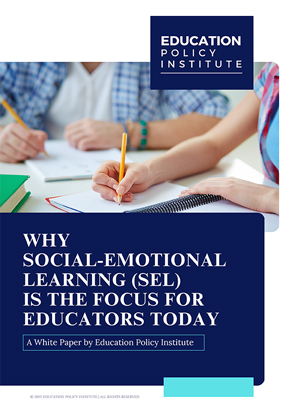The pandemic era will always remain unforgettable, as it brought online learning to the forefront, becoming a pivotal solution in overcoming educational obstacles and ensuring uninterrupted learning for students. Faculty members, not accustomed to online teaching, demonstrated their adaptability by substituting classrooms and lecture halls with Zoom rooms.
These measures proved exemplary of educational institutions' ability to mobilize and salvage the academic year. However, online learning is more than a mere shift in approach. This article aims to provide a comprehensive understanding of the key obstacles educators and students face during online learning. It will also present essential recommendations to address these challenges effectively.
Challenges of Online Learning
Although new technology has the potential to drive change on its own, it requires skilled individuals to guide and dictate how it should impact and adapt. In the context of online learning, educators play a crucial role in harnessing its benefits. This necessitates a thorough comprehension of their challenges with e-learning and taking proactive measures to address them.
Problem#1: Improper Communication
Online instruction and communication can be likened to communicating without the benefit of body language, whether it's happening synchronously or asynchronously. This lack of nonverbal cues can make it challenging to accurately assess a student's request for an extension, leading to potential confusion and misunderstandings among the class. Additionally, the absence of proper communication in the online environment can heighten anxiety levels.
To address these challenges, it is essential to adopt effective strategies. Firstly, online instructions should be frequent, clear, and engaging, utilizing interactive designs and content to ensure effective communication. Teachers must actively keep in touch with each student, understanding the importance of personalized communication.
-
Tackling the challenge
To enhance overall communication, educators can prepare FAQs detailing common operations and procedures that can prove beneficial. This will provide students with readily accessible information, reducing confusion and promoting a better understanding of the course requirements and expectations. By implementing these measures, teachers can make the online learning experience more efficient and conducive to learning.
Problem#2: Neglecting Feedback
Relying solely on summative assessments may not be sufficient. Continuous feedback is essential for students' improvement, serving as both motivation and guidance. It is vital for instructors to provide feedback to help students enhance their performance. Lack of motivation and discipline among students could be attributed to the absence of ongoing feedback. In the online medium, where vast amounts of information are available without streamlined filters, the significance of feedback becomes even more pronounced.
-
Tackling the challenge
Educators must pay close attention to the importance of developing and designing a continuous feedback model to facilitate a smoother flow of criticism and advice. In this regard, leveraging the diverse range of online channels, such as video conferencing, spreadsheets, email, slide packs, and more, provides ample opportunities for recording and presenting feedback effectively.
Problem#3: Insufficient digital knowledge
It's not so shocking to know that many students and teachers feel helpless, let alone obtain high-level training in online practices. They lack even basic computer education, leaving them feeling tormented when it comes to downloading new apps or offering suggestions on them. Moreover, operating applications like MS Word and PowerPoint can prove to be an arduous undertaking, adding to their feelings of vulnerability
-
Tackling the challenge
Schools must prioritize taking periodic training sessions for both students and teachers to cultivate digital dexterity and enhance their familiarity with technology. This emphasis on training aims to enable and enrich the learning process through the seamless integration of technology into educational practices.
Problem#4: Technology Glitches
It is true that technology serves as the foundational pillar of digital education, and without a proper tech infrastructure, any educational endeavors built upon it will lack the strength to thrive. Both educators and students face challenges stemming from inadequate technical resources. From unreliable Wi-Fi connections to insufficient devices, these technical issues hinder the fulfilment of basic necessities for both teachers and learners. Even when the necessary provisions are in place, unexpected computer shutdowns or errors during live teaching sessions can disrupt the learning process.
-
Tackling the challenge
Schools need to proactively address their technological requirements by conducting surveys among students, teachers, and parents well in advance. These surveys should cover inquiries about internet bandwidth and device accessibility to understand the technical needs of all stakeholders involved in the learning process. By gathering this vital information beforehand, schools can better prepare and implement effective strategies to meet the digital necessities of their educational community.
Problem#5: Inadequate student interaction
In the context of online learning, students face several distractions that can hinder their engagement. Siblings occasionally popping into video calls and persistent background noises act as disruptive elements, creating challenges for effective learning. These interruptions not only fracture student concentration but also run the risk of causing them to disengage from the educational experience. As an educator, it's essential to be mindful of these issues and find strategies to maintain student engagement despite the obstacles they encounter.
-
Tackling the challenge
Teachers play a crucial role in ensuring student engagement during online classes. By using effective instructional techniques, setting a fixed class schedule, encouraging interactive discussions, and designating a quiet learning space at home, educators create a conducive learning environment. Clear course expectations and promoting debates enhance student engagement further. Proactive measures empower students to be actively involved in their virtual learning journey.
In a Nutshell…
The widespread adoption of online learning requires creative and attentive support from institutions. This transition goes beyond technology, requiring strategic incorporation of tools and a shift in instructional models to prioritize student engagement. Implementing a Learning Management System proves instrumental in promoting transparency and resource accessibility. While embracing the flexibility of online learning, it is crucial to retain elements of in-person instruction for the benefit of current generations. Regular evaluation and improvement of the online experience are essential, as we envision a future where online education becomes a permanent part of the curriculum. Embracing this transformation with a forward-looking approach will shape the future of education.
Latest
Trends blogs
- Education and Industry Alignment: Rethinking Skill-Based Curriculum
- Education Policy Reform Amid Global Challenges and Shifting Standards
- Certification and Credentials: The New Fuel for Career Growth
- Technology in Outcome-Based Education: Driving Change in Higher Education





